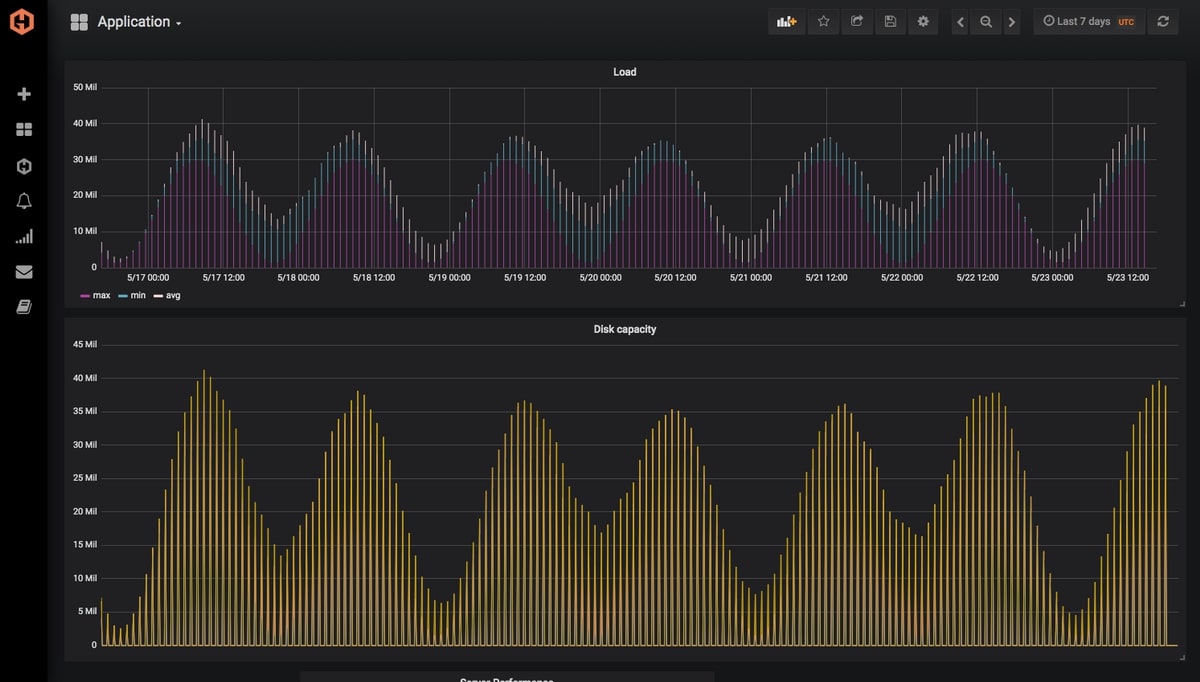Table of Contents
- Introduction
- Key Takeaways
- Knowing which KPIs are important
- The most important mobile game KPIs to track
-
- Overall Growth
-
- User Engagement
-
- User Experience
-
- Infrastructure Performance
-
- Monetization Metrics
-
- Getting the most from core mobile game KPIs
- Define the context where a KPI applies
- Document crucial details for each KPI
- Use the right KPI monitoring platform
- Best Practices for KPI Monitoring
- Conclusion
Introduction
In the competitive landscape of mobile gaming, understanding and tracking the right Key Performance Indicators (KPIs) is crucial for success. This guide delves into the most critical KPIs across various domains, providing insights and practical steps to enhance your game's performance and user satisfaction.
Managing modern mobile games involves measuring and tracking dozens of metrics. Each value lets you know how well your game is doing in a specific area, such as user experience, infrastructure, and monetization, to name but a few. But not all KPIs are created equally. Some metrics are more valuable than others for helping you make informed business and technical decisions about your game.
That’s what we’ll take a look at in this article. This post takes a deep dive into the most critical KPIs to keep an eye on for each of the five major areas of mobile game monitoring. We’ll also review key ideas and best practices to help you leverage these metrics as a mobile game developer.
As you’ll see later in this article, a key component in collecting and analyzing mobile game KPIs is a robust monitoring system. This is where MetricFire comes in handy.
MetricFire takes the pain out of monitoring KPIs in every aspect of your mobile game. MetricFire is often used for application metrics, infrastructure, and systems monitoring, as well as business metrics. MetricFire is a complete monitoring platform built on top of hosted versions of popular observability tools, including Graphite and Grafana.
Check out how MetricFire streamlines mobile game monitoring by signing up for a free trial or booking a demo today.
Key Takeaways
- Mobile game development involves monitoring and tracking various metrics to assess different aspects of the game's performance, such as user experience, infrastructure, and monetization.
- Not all Key Performance Indicators (KPIs) are equally valuable, so it's essential to focus on the most critical ones for making informed business and technical decisions.
- A good KPI should objectively measure progress toward a specific goal, track changes in performance over time, and correlate with decision-making factors.
- The choice of KPIs depends on factors like the type of mobile game, its growth stage, infrastructure complexity, and available resources.
Knowing which KPIs are important
Key performance indicators (KPIs) are metrics that let you measure how well a product or activity (in this case, your mobile game) performs in a set of defined objectives. In terms of monitoring mobile games, the right set of KPIs helps you spot trends in user behavior, gauge the quality of the user experience, determine the health of your infrastructure, and evaluate the app’s earning potential.
But that all depends on being able to, first and foremost, choose the right set of metrics to track and measure. As a developer, you’re well aware of the massive amounts of data points your game can collect throughout the player journey and across the different components of your app and stack. However, only a handful of these metrics matter to effectively monitor and manage mobile games.
So which mobile game KPIs should you keep track of? There’s no one-size-fits-all answer to this question, but “important” KPIs tend to share some common characteristics. In addition, there are factors related to the mobile game system itself that will affect which KPIs to choose and which ones to avoid.
What makes a KPI “important”?
According to KPI.org, a metric qualifies as an effective KPI should:
-
Align with specific objectives: Clearly relate to your game's goals.
-
Be measurable: Quantifiable through reliable data sources.
-
Influence decision-making: Provide insights that guide strategic choices.
-
Reflect performance over time: Track changes and trends effectively.
-
Be actionable: Lead to specific actions for improvement.Redditmetricfire.com+1Udonis Mobile Marketing Agency+1
For instance, if your goal is to increase user retention by 25% this quarter, you might monitor:metricfire.com
-
Retention Rate: Percentage of users returning after a specific period.
-
Session Duration: Average time users spend per session.
-
Crash Rate: Frequency of app crashes affecting user experience.mapendo.co+1metricfire.com+1
These metrics provide a comprehensive view of user engagement and app stability, informing strategies to enhance retention.
Let’s use a very simple example to see how these qualities help pinpoint important mobile game KPIs. Say you’re looking to increase your app’s user retention rate by 25% at the end of this quarter. A hypothetical set of metrics to track might include:
- Historical values of retention rate serve as lagging indicators to measure past performance over time.
- User experience metrics (like load times, user error rates, and crashes) and infrastructure metrics (such as latency and uptime) can serve as leading indicators that correlate with retention rate.
With these data points, you now have a baseline (historical values) for setting and analyzing objectives. You can then specify a desired level of performance for each of the leading indicators (UX and infrastructure metrics). These targets, in turn, help evaluate and predict your success at meeting the desired increase in user retention rates.
What other factors affect which KPIs to choose?
In our example below, we hand-picked the metrics that work well together as good KPIs for managing user retention rates. In reality, the choice of metrics won’t be as clear-cut. Specific KPIs depend on many different factors, such as:
- Audience and type of mobile game: Your game’s player base, genre/category, and monetization model will determine which engagement and user experience metrics to prioritize.
- Stage of growth: The KPIs to track for an early-stage mobile game will be very different from a more mature app’s critical metrics.
- The complexity of your stack and environments: As the game’s infrastructure and deployment setup grow more complex, the choice of KPIs will need to evolve along with it to keep up.
- The metric’s actual impact: The usefulness or benefit of tracking a metric can change throughout your app’s life cycle, so you need to constantly evaluate which KPIs provide value to your decision-making process.
- Available resources: The choice of KPIs also boils down to what you can afford to track with the amount of time, effort, and money you or your company sets aside for metrics.
Now that you know what makes up an “important” KPI and what you need to take into account when choosing one, we’ll go over some of the most widely-used metrics for monitoring different areas of a modern mobile game.
The most important mobile game KPIs to track
1. Overall Growth
Assess the expansion and reach of your game:
-
Downloads: Total number of app downloads.
-
Installations: Number of successful app installations.
-
Registrations: Users completing the sign-up process.
-
User Growth Rate: Rate at which the user base is expanding.
Overall Growth metrics like downloads, installs, and sign-ups also serve as starting points for analyzing KPIs in other areas. They’re good indicators of user activity at each stage of your user acquisition funnel (from download to installation, and conversion).
2. User Engagement
Measure how actively users interact with your game:
-
Daily Active Users (DAU): Unique users engaging daily.
-
Monthly Active Users (MAU): Unique users engaging monthly.
-
Stickiness Ratio: DAU divided by MAU, indicating user retention.
-
Session Frequency: Average number of sessions per user per day.
Because UX metrics offer direct insight into how users enjoy your game, they’re often used as leading indicators to predict or determine other KPIs like engagement and monetization.
3. User Experience
Evaluate the quality and performance of the user interface:
-
Load Time: Time taken for the game to load.
-
Crash Rate: Frequency of app crashes.
-
Error Rate: Occurrence of errors during gameplay.
-
User Feedback: Ratings and reviews from users.
Because UX metrics offer direct insight into how users enjoy your game, they’re often used as leading indicators to predict or determine other KPIs like engagement and monetization.
4. Infrastructure Performance
Monitor the technical aspects ensuring smooth operation:
-
Server Uptime: Percentage of time servers are operational.
-
Latency: Delay between user action and server response.
-
Throughput: Amount of data processed over a period.
-
Error Logs: Recorded errors for debugging and analysis.
As we’ve seen in the previous section, the complexity of your infrastructure affects which specific KPIs to choose. The metrics we mentioned above are part of the standard infrastructure KPIs for monitoring mobile games, so they’re ideal starting data points you can extend according to your needs.
5. Monetization Metrics
Track revenue generation and financial performance:
-
Average Revenue Per User (ARPU): Total revenue divided by the number of users.
-
Lifetime Value (LTV): Projected revenue from a user over their engagement period.
-
Conversion Rate: Percentage of users making purchases.
-
Churn Rate: Rate at which users stop engaging with the game.
Some of the monetization metrics we’ve mentioned above only apply to F2P mobile games. F2P apps incur ongoing marketing expenses, so you typically need to keep track of CPI, TTP, and ATV along with the other KPIs if you’re managing a F2P title.
With a full list of standard mobile game KPIs under our belts, we’re now ready to learn a few best practices to make sure we get the most out of these metrics.
Getting the most from core mobile game KPIs
Mobile game KPIs work best when they’re used in the right context and when they help answer specific questions about your app’s performance. In addition, KPIs provide the most value when they’re clear, understandable, and well-documented. Lastly, the best way to turn KPIs into actionable insights for making decisions is with the help of a robust monitoring platform.
Define the context where a KPI applies
Context is everything when it comes to choosing and using KPIs. Context determines whether or not a metric is relevant. Use the following guidelines to help you pinpoint the specific context where a KPI applies:
- Specify which current high-level goal a KPI relates to A KPI always needs to be tied to a higher-level goal. Regardless of whether it’s a strategic objective or an operational target, the reason why KPIs exist is to tell you if you’re on track or not. For example, targeting a 30% increase in app downloads can be tied to a higher-level goal like increased market share.
- Describe the KPI’s intended audience: Who will be using the KPI? Will it be specific people in the development team? Do other teams need to track the metric, too?
- Indicate which key performance questions (KPQs) the KPI helps answer: Making sure that a KPI answers at least one key performance question about your app will help you determine whether or not a metric will be useful in that context. Keep in mind that a single KPI can help answer multiple KPQs, and a single KPQ can be answered by more than one KPI.
- Explain how the KPI will and will not be used: It’s important to list specific ways the KPI will be used, as well as describe the limits of its uses.
Document crucial details for each KPI
Useful KPIs are clearly defined and easy to understand. That’s why, whether you work with others or are just a one-person development shop, you need to document critical details of every KPI you use. According to Bernard Marr, these crucial KPI details include:
- The name or title of the KPI
- How data and values for the KPI will be collected
- How the metric is measured or calculated
- Benchmark and performance thresholds
- Data source
- When and how often the data will be collected
- Method and frequency of reporting
- Person in charge
- Data expiry and validity period
- Cost of collecting and tracking
- Completeness and limitation of the data
Use the right KPI monitoring platform
A reliable monitoring system helps you maximize the value of every mobile game KPI you’re tracking. But with so many different solutions available out there, how can you find the right tool for the job?
Each monitoring platform or service has its strengths and weaknesses. But there’s a set of features common to most top-ranking tools for monitoring mobile games:
- Separate from your mobile stack: A good monitoring tool must be independent or separate from the system being monitored. This helps minimize the observer effect and ensures reliability if your stack encounters failures and outages.
- Ease of setup and use: How quickly can you get up and running? How much setup and config are required? How steep is the learning curve?
- Streamlined reporting and analytics: The monitoring platform should let you track the exact metrics and KPIs you need at varying levels of granularity (high-level summaries, detailed reports, interactive dashboards, etc.).
- Monitor across your mobile stack: A good mobile game monitoring tool provides end-to-end visibility of your entire stack, from infrastructure to client-side performance.
- Correlate metrics from different sources and components: The monitoring system should let you easily combine and display data points from different sources.
- Scalability and extensibility: Does the monitoring platform easily scale with your needs? Can you add new metrics and customize dashboards right away?
- Alert and notification capabilities: This is one of the most critical features of a monitoring system. The tool should allow you to customize alerts and choose the notification setup of your choice.
As an example, MetricFire supports all the critical features you need to reliably monitor mobile game KPIs:
- Time-series metrics monitoring and alerting with Hosted Graphite
- Customizable charts and data visualization with Hosted Grafana Dashboards
- End-to-end monitoring throughout your stack, including both backend and front-end performance metrics
- Scalable cloud and on-premise options to match your deployment needs
- Delivers value from day one with a fully-managed solution
Best Practices for KPI Monitoring
-
Contextual Analysis: Interpret KPIs within the context of your game's genre, target audience, and lifecycle stage.
-
Regular Reviews: Continuously assess and adjust KPIs to align with evolving goals.
-
Integrated Tools: Utilize platforms like MetricFire for comprehensive monitoring and visualization.
-
Data-Driven Decisions: Base strategic choices on KPI insights to enhance game performance.
The best way to experience these features first-hand is to sign up for a free trial or schedule a demo today.
Conclusion
Effectively monitoring and analyzing KPIs is vital for the success of mobile games. By focusing on the right metrics, developers can make informed decisions, optimize user experience, and drive growth. Implementing robust monitoring practices ensures your game remains competitive and engaging in the dynamic mobile gaming market.
In this article, we learned about what makes a KPI important, talked about which KPIs are typically monitored in mobile games, and discussed a few best practices to help you get the most from those KPIs.
Now that you’ve gained a deeper understanding of the important mobile game metrics to track, it’s time to put what you’ve learned into action. Sign up for a free trial and start tracking your game’s KPIs right away, and book a demo to explore MetricFire’s suite of monitoring tools.




